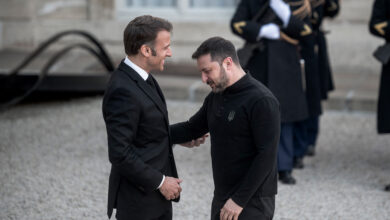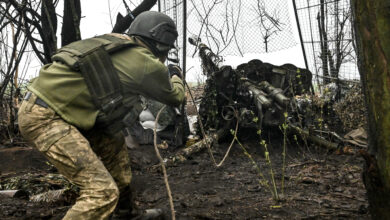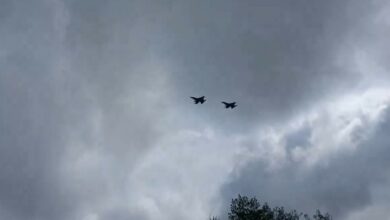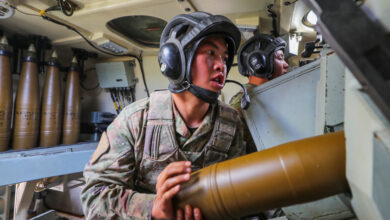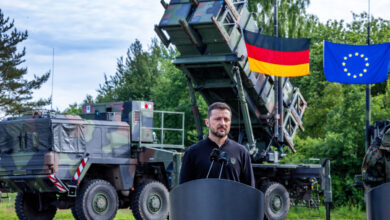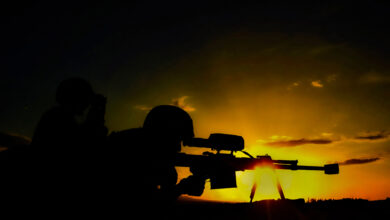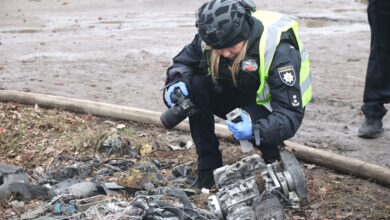Russia has been launching major investments and building up its military presence in the Arctic as it steps up its drive to develop a crucial northern maritime route linking Asia and Europe.
In the country’s latest move, Russia’s nuclear agency Rosatom on Tuesday presented its two new RITM-200 reactors that will power the future Chukotka icebreaker ship.
The need to expand those Arctic ambitions, made possible by global warming and the consequent melting ice sheets, has become more acute due to Western sanctions over Russia’s offensive in Ukraine.
Moscow wants to redirect its sanctioned hydrocarbons to Asia through the Northern Sea Route.
Faced with challenges to the economy, Russian President Vladimir Putin has called the development of the route “one of the obvious strategic priorities.”
After launching its assault on Ukraine last year, the government confirmed plans to invest around 20 billion euros up to 2035 on a Northern Sea Route development project.
Authorities say the number of ports of call was recently increased from four to 11, with the route extended to the far eastern city of Vladivostok.
Rosatom said this had allowed for 31.4 million tonnes of cargo traffic via the Northern Sea Route between January and October — 10 times more than a decade ago.
‘Uncertainty’
“There’s all kinds of projects but Ukraine and sanctions have created uncertainty on how to finance those projects,” said Malte Humpert, founder of US think tank The Arctic Institute.
He gave the example of Russia’s massive Arctic LNG 2 gas project, which was hit with US sanctions last month.
“But Russia doesn’t have much alternative. The European market is off-limit… It needs to produce oil and gas and export to get money, and buyers are now in Asia,” Humpert told AFP.
Yet, numerous logistical challenges remain.
When it comes to the Arctic fleet, “replacing a number of technologies originating from unfriendly countries is the main challenge,” Arctic Minister Alexei Chekunkov said in May.
In recent months, Russia has had to turn to third countries to obtain parts for its LNG tankers, which are often produced in Asia using Western technology, to which Russia no longer has access.
At this stage, the Russian fleet is limited to 30 Arctic class ships in operation and another 33 under construction, according to Rosatom head Alexei Likhachev.
“Overall, we will need up to 100 Arctic class ships,” he said in May.
Russian authorities hope to ship more than 190 million tonnes of cargo through the Northern Sea Route in 2030.
That volume cannot compete with that of the Suez Canal, where ships carried 1.41 billion tonnes of cargo last year.
But it is a shorter route to Asia than heading through the Mediterranean to the Suez Canal.
Military Presence
In September, Russia sent its first two oil tankers through the northeast passage to China without assistance from ice-breakers to pave the way — a move that presents substantial environmental risks.
“If you have tankers without ice classification sailing in those waters, then you can have a big hazard, a big risk of incident of oil spills,” Humpert said.
The accelerated melting of the Arctic’s glaciers has also attracted the interest of other foreign powers, including the United States and China.
Russia has in recent years beefed up its military presence in the Arctic region by reopening and modernizing several bases and airfields abandoned since the end of the Soviet era.
“Russia has deployed S-300 and S-400 missiles, extended runways to accommodate different types of nuclear type bombers. It has also set up large radar installations,” Humpert said.
In August, the northern fleet — tasked with protecting the Arctic sea routes — held massive military drills with more than 8,000 service personnel and several submarines.
“The increased competition and militarisation in the Arctic region, especially by Russia and China, is concerning,” Admiral Rob Bauer, chair of the NATO military committee, said in November.
“We must remain vigilant and prepare for the unexpected,” he warned.





